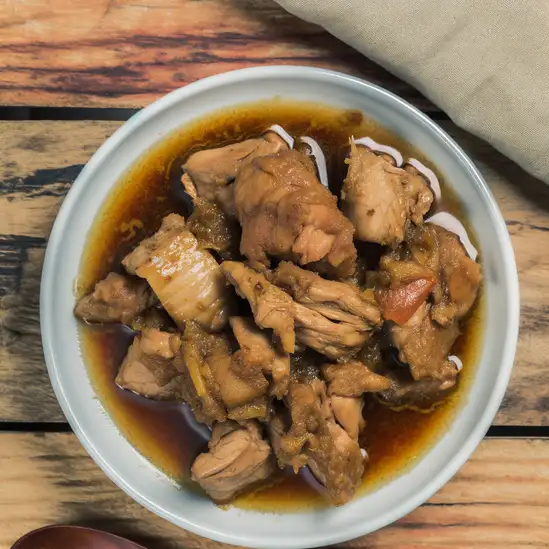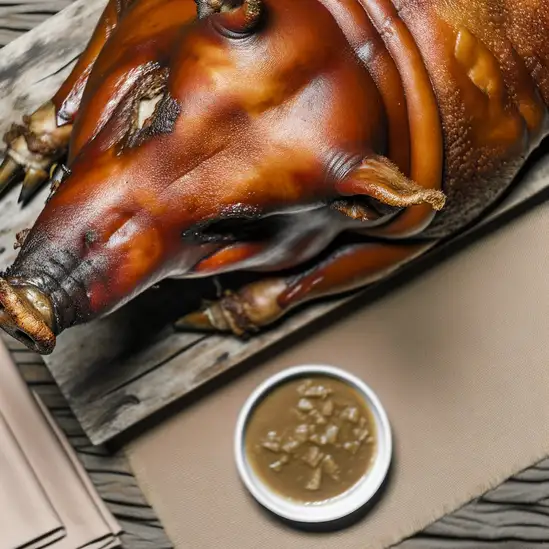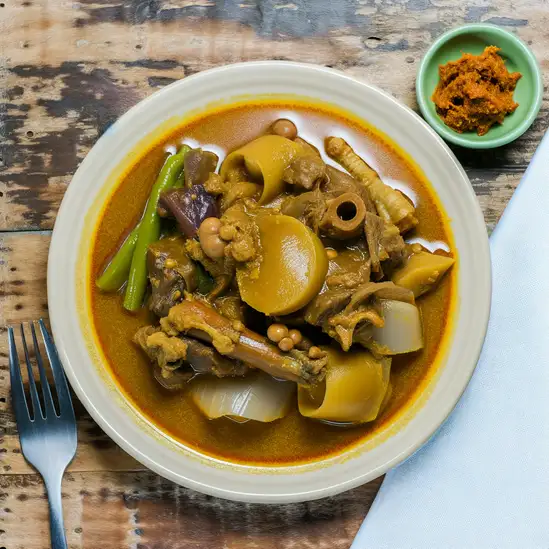


Manila is this vibrant,bustling heart of the Philippines that grabs you the moment you step off the plane. There’s an energy here that’s both chaotic and warm,like the city is alive and breathing with stories waiting to be discovered. Walking through its streets,you’ll catch the scent of sizzling street food mingling with the salty breeze from Manila Bay. The soundscape is a lively mix of jeepneys honking,street vendors calling out their wares,and the occasional laughter spilling from a nearby sari-sari store. What makes Manila truly special is its rich tapestry of history and culture woven into everyday life. You can wander through Intramuros,the old walled city,and feel the echoes of Spanish colonial days in the cobblestone streets and centuries-old churches. Then,just a few blocks away,modern skyscrapers rise,showcasing the city’s dynamic spirit. The people here are incredibly warm and welcoming,always ready to share a story or recommend their favorite spot for halo-halo,a sweet,icy treat that’s perfect for cooling down in the tropical heat. Manila’s charm lies in its contrasts—the old and new,the quiet moments in hidden courtyards and the lively buzz of night markets. It’s a place where you can savor rich Filipino flavors,dive into vibrant festivals,and feel the pulse of a city that’s constantly evolving but never loses its heart. If you want a trip that’s full of life,color,and genuine warmth,Manila’s waiting with open arms.
The information on this page is currently being reviewed by Tripkliq and should be used as a guide only
Eng word: Hello
Eng pronunciation: Kah-moo-stah
Local language: Kamusta
Eng word: Goodbye
Eng pronunciation: Pah-ah-lahm
Local language: Paalam
Eng word: Thank you
Eng pronunciation: Sah-lah-maht
Local language: Salamat
Eng word: How much
Eng pronunciation: Mahg-kah-noh
Local language: Magkano
Eng word: Toilet
Eng pronunciation: Bahn-yo
Local language: Banyo
Eng word: Help me
Eng pronunciation: Too-loo-ngahn moh ah-koh
Local language: Tulungan mo ako
Eng word: Yes
Eng pronunciation: Oh-oh
Local language: Oo
Eng word: No
Eng pronunciation: Hin-deh
Local language: Hindi
Eng word: Excuse me
Eng pronunciation: Pah-oo-mahn-hin
Local language: Paumanhin
Manila was officially founded on June 24,1571, by Spanish conquistador Miguel López de Legazpi, making it one of the oldest cities in the Philippines.
In the late 16th century, the Spaniards built Intramuros, a fortified city in Manila, which served as the seat of government and the religious capital during the Spanish colonial period.
Established in 1594, Binondo in Manila is recognized as the world's oldest Chinatown. It was created as a settlement for Catholic Chinese and has become a bustling commercial and cultural hub.
Dedicated to the national hero Dr. Jose Rizal, Rizal Park is one of the largest urban parks in Asia. It is a historical landmark where Dr. Rizal was executed in 1896, sparking the Philippine Revolution against Spanish colonization.
The Manila Cathedral, officially known as the Minor Basilica and Metropolitan Cathedral of the Immaculate Conception, has been destroyed and rebuilt several times since the 16th century. It stands today as a symbol of resilience and faith.
Constructed in 1607, San Agustin Church is the oldest standing stone church in the Philippines. It survived various natural and man-made disasters and is a UNESCO World Heritage Site, recognized for its Baroque architecture.
Manila is renowned for its vibrant blend of cultures, reflected in its festivals, cuisine, and architecture. This cultural melting pot combines influences from Spanish colonialism, American occupation, and Asian traditions.
The Declaration of Philippine Independence from American rule was formally proclaimed on July 4,1946, in Manila, marking the birth of the Republic of the Philippines.
Post-World War II, Manila became the center for economic growth and development, transforming into a bustling metropolis and playing a pivotal role in the nation's progress and modernization.
In Manila, the most common Power Adaptor is Type A, Type C.



Adobo is a popular Filipino dish made with meat (usually chicken or pork) marinated in vinegar, soy sauce, garlic, and other spices, then simmered until tender. It is often considered the national dish of the Philippines.

Sinigang is a sour soup made with tamarind as the base flavoring. It typically includes pork, shrimp, or fish, along with a variety of vegetables like water spinach, radish, and eggplant. It is a comforting and tangy dish that is popular in Filipino households.

Lechon is a whole roasted pig that is a staple at Filipino celebrations and special occasions. The skin is crispy and the meat is tender and flavorful. It is often served with a liver sauce or vinegar dipping sauce.

Kare-Kare is a Filipino stew made with oxtail, tripe, and vegetables in a rich peanut sauce. It is often served with bagoong (fermented shrimp paste) on the side. The dish is hearty and flavorful, perfect for a comforting meal.

Halo-Halo is a popular Filipino dessert that translates to 'mix-mix' in English. It is a colorful and refreshing concoction of shaved ice, sweetened fruits, beans, jellies, and topped with leche flan and ice cream. It is a must-try on a hot day in Manila.
Imagine stepping onto Bohol Island and instantly feeling a gentle,tropical embrace—the kind that makes you slow down and soak in every moment. The air is thick with the sweet scent of coconut and blooming flowers,while the distant chatter of locals blends with the rhythmic crash of waves against limestone cliffs. Bohol isn’t just a place; it’s a mood,a warm invitation to explore nature’s quirks and the rich heartbeat of Filipino culture.
What really sets Bohol apart is its playful landscape. You’ll find yourself wandering through the surreal Chocolate Hills,those perfectly rounded mounds that turn a rich brown during the dry season,looking almost like giant scoops of ice cream scattered across the earth. Nearby,the tiny tarsiers—those wide-eyed,delicate creatures—peek from the trees,reminding you how wonderfully diverse life here is. And the rivers? They’re like liquid mirrors,reflecting lush greenery and the sky’s ever-changing moods.
But Bohol isn’t just about nature. The island’s towns pulse with genuine warmth—smiling faces,vibrant festivals,and the irresistible aroma of freshly grilled seafood mingling with the salty breeze. Whether you’re savoring a plate of spicy kinilaw or chatting with fishermen mending their nets,you’ll feel the island’s soul in every interaction. Bohol invites you to slow down,breathe deeply,and discover a place where every sight,sound,and flavor tells a story you won’t forget.
If you ever find yourself craving a place where the ocean’s rhythm sets the pace of your days,Siargao is that kind of magic. It’s this laid-back island in the Philippines where time seems to slow down just enough for you to catch your breath and soak in the simple joys. Imagine waking up to the gentle crash of waves,the salty breeze weaving through palm trees,and the sun painting the sky in soft pastels. The vibe here is effortlessly chill but alive with a quiet energy — surfers carving through glassy waves,locals greeting you with warm smiles,and the scent of fresh coconut and grilled seafood mingling in the air.
What really makes Siargao stand out is its blend of raw natural beauty and genuine island spirit. Beyond the famous Cloud 9 surf break,you’ll find hidden lagoons shimmering with turquoise water,mangrove forests whispering secrets,and quaint villages where life moves at a human pace. The island’s culture feels deeply connected to the sea and land,with festivals,music,and food that celebrate this bond. Don’t miss trying the local delicacies — sweet,sticky rice cakes or freshly caught fish grilled over open flames,bursting with smoky flavor.
Whether you’re paddling out for a surf session,exploring the lush interiors on a motorbike,or simply lounging in a hammock with a cold drink,Siargao invites you to slow down and savor every moment. It’s a place that stays with you long after you leave,a gentle reminder of the beauty in simplicity and the joy of discovery.
If you ever find yourself dreaming of a place where nature feels like it’s wrapped you in a gentle,endless hug,Palawan is that kind of magic. The moment you step off the boat or plane,there’s this fresh,salty breeze that carries the scent of the ocean mixed with tropical flowers—like the island itself is welcoming you home. The vibe here is laid-back but alive,with locals who smile easily and share stories about their island with genuine warmth. It’s a place where time slows down just enough for you to really soak in the beauty around you.
Picture this:towering limestone cliffs rising dramatically from turquoise waters,mangroves whispering secrets in the wind,and hidden lagoons so clear you can see colorful fish darting beneath the surface. Walking through the small towns,you’ll hear the gentle hum of jeepneys,the laughter of children playing by the shore,and the occasional strum of a guitar from a nearby beach bar. The food is a celebration of the sea—freshly grilled fish,sweet mangoes,and the unmistakable tang of calamansi that brightens every dish.
What makes Palawan truly special is how it balances adventure with tranquility. You can explore the mysterious underground river,kayak through quiet coves,or simply lounge on powdery white sand beaches while the sun dips below the horizon in a blaze of pink and gold. It’s a place that invites you to slow down,breathe deeply,and fall in love with the simple,stunning rhythm of island life.
Bali feels like stepping into a vibrant dream where every corner pulses with life and warmth. From the moment you arrive,there’s this unmistakable energy—part spiritual,part playful—that wraps around you like a soft,tropical breeze. Imagine waking up to the gentle rustle of palm leaves and the distant sound of waves crashing against volcanic black sand beaches. The air carries a mix of frangipani blossoms and salty sea spray,instantly grounding you in the island’s natural beauty.
What really makes Bali special is its rich culture woven into everyday life. You’ll see locals in colorful sarongs offering flowers at temple steps,hear the rhythmic beat of gamelan music drifting through the air,and catch glimpses of intricate wood carvings and vibrant paintings in small artisan shops. The island’s spirituality isn’t just something you observe—it’s something you feel,a quiet presence that invites you to slow down and connect.
And then there’s the food—oh,the food! Freshly grilled satay,fragrant nasi campur bursting with spices,and tropical fruits so sweet they almost taste like candy. Whether you’re dining in a bustling market or a cliffside café overlooking the ocean,every bite feels like a celebration of Bali’s rich flavors and traditions. Honestly,Bali isn’t just a place you visit; it’s a place that stays with you,long after you’ve left.
Imagine stepping into a place where the air hums with the gentle rhythm of waves lapping against sun-warmed shores,and the scent of salty sea mingles with fragrant street food stalls. That’s Phuket for you—a vibrant island that feels alive in every sense. It’s not just the stunning beaches that grab you,but the way the island pulses with a laid-back energy,where colorful markets buzz with chatter and the aroma of grilled seafood fills the air. Walking through the old town,you’ll find charming Sino-Portuguese buildings painted in pastel hues,their shutters creaking softly in the tropical breeze,while tuk-tuks zip by,adding a playful soundtrack to your explorations.
Phuket’s character is a beautiful blend of tradition and liveliness. Temples with golden spires peek out from lush greenery,inviting quiet moments of reflection,while nearby,night markets burst with life—vendors calling out,sizzling woks,and the sweet tang of mango sticky rice tempting your taste buds. The island’s culture is warm and welcoming,with locals who smile easily and share stories over cups of strong Thai coffee or fresh coconut water.
What makes Phuket truly special is how it wraps you in its embrace—whether you’re watching a fiery sunset from a cliffside bar,diving into crystal-clear waters teeming with vibrant marine life,or simply savoring the spicy kick of a freshly made curry. It’s a place that invites you to slow down,soak in the colors,sounds,and flavors,and leave with a heart full of unforgettable moments.
The Maldives is a tropical paradise known for its overwater bungalows,crystal-clear waters,and vibrant marine life. It's an ideal destination for luxury,romance,and underwater adventures.
ExploreScammers may install skimming devices on ATMs to steal card information. They may also use hidden cameras to capture PIN numbers.
Some money changers may offer attractive rates but use sleight of hand to shortchange tourists or provide counterfeit bills.
Scammers may pose as representatives of charitable organizations, soliciting donations from well-meaning tourists for non-existent causes.
Individuals posing as official tour guides may offer their services and charge high fees for subpar or non-existent tours.
Some scammers may call hotel rooms pretending to be from the front desk, asking for credit card information under the guise of verifying details.
Tourists may be charged excessively high prices for souvenirs, especially in areas heavily frequented by tourists.
Crowded areas like markets and public transportation are hotspots for pickpockets who target tourists' wallets, phones, and other valuables.
Vendors may sell counterfeit or low-quality goods at inflated prices, often targeting tourists who are unfamiliar with local prices.
Some taxi drivers may refuse to use the meter and quote exorbitant fares. They might also take longer routes to increase the fare.
The Philippines has very strict drug laws under the Comprehensive Dangerous Drugs Act of 2002 (Republic Act No. 9165). The possession, use, or trafficking of illegal drugs can result in severe penalties, including long prison sentences and even the death penalty for certain offenses. Tourists should exercise extreme caution and avoid any involvement with illegal drugs.
In Manila, smoking is regulated under the Tobacco Regulation Act of 2003 (Republic Act No. 9211) and various local ordinances. Smoking is prohibited in public places such as schools, hospitals, public transportation terminals, and enclosed public spaces. Designated smoking areas are allowed but must comply with specific guidelines. Violators may face fines and other penalties.
Vaping is subject to similar regulations as smoking. The use of e-cigarettes is prohibited in public places where smoking is banned. The sale of vaping products to minors is also prohibited. Local ordinances may impose additional restrictions, so it's advisable to check specific rules in different areas of Manila.
What are other people saying about Manila?
Recent Social posts about Manila
There is nothing to show you for now.